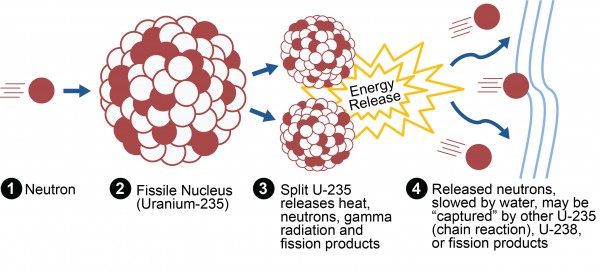

Moreover, its transport does not rely on fixed infrastructures such as pipelines. Uranium is a high-density ore, and thus volumes are quite low compared to oil or gas. The possible opening of new mines, particularly in Africa, calls for the standardisation of convoy security practices, particularly for landlocked deposits. In fact, no reactor currently under construction internationally comes from the USA, while Russian and Chinese manufacturers are multiplying export contracts. The financial difficulties of nuclear power plant operators, penalised by market economy conditions and Washington's rules on the export of nuclear goods and services, have led to a structural decline of the industry on the world market. Of the four reactor manufacturers that the country had in the 1970s, only Westinghouse still has a conventional (light water) reactor in its catalogue. While the United States remains by far the most nuclearised country in the world, the US industrial fabric has contracted sharply since the Three Mile Island power plant accident in 1979.

However, CNNC has taken the ascendancy over its rivals by offering a one-stop-shop for civil nuclear energy to the foreign buyers, based on the Rosatom model. Despite the efforts of the government to avoid a cannibalisation of Chinese interests internationally, the three entities frequently find themselves competing in the same markets.

The Chinese nuclear industry is organised around three major groups: the China National Nuclear Corporation (CNNC), the China General Nuclear Power Corporation (CGN) and the State Power Investment Corporation (SPIC), which control the entire value chain of the sector. Rosatom is a single point of contact and provides an integrated offer to countries seeking to develop nuclear energy. This vertical integration is one of Russia's major assets in the export of nuclear technology. Russia's industrial sector is vertically structured around Rosatom, which controls the entire civil nuclear value chain, from uranium mining to waste management through fuel production and the construction, sale and operation of reactors. Each industry structure is a fundamental component of their projection capacity abroad. Russia, China and the United States have radically different nuclear industries, linked to their historical development, geopolitical strategies, power rivalries and specific internal processes. The organisation of the Chinese, Russian and US nuclear industry. Russia and China have shown a growing involvement in civil nuclear power, with national companies (Rosatom in Russia, and CNNC, SPIC and CGN in China) receiving financial support from their respective governments both for their domestic and international markets.įigure 1: Nuclear electric capacity forecast (MW) Europe and North America remain the leading producers of nuclear electricity, but the most dynamic markets are in Asia, Africa, South America and the Middle East. In June 2020, 413 commercial reactors were in operation in 31 countries, producing 10.15% of the world's electricity. The security challenges of civil nuclear power have been highlighted by the transformations that the sector is currently undergoing. Moreover, the resource-focused approach neglects the importance of the reactors themselves in the geopolitical characteristics of nuclear power. Power plants however do not use raw uranium, but rather a highly transformed version thereof, and its fabrication has its own specific issues. Using the same mode of reasoning for nuclear energy as for oil and gas has also introduced another bias: as uranium is perceived to be better distributed globally than hydrocarbons and its energy density makes it easy to store, nuclear power has been falsely perceived as a less risky form of energy. Existing research often focuses on proliferation issues, while other forms of political uses of civil nuclear power have mainly stayed in the shadows. Studies on the geopolitics of nuclear energy are far less numerous than for other energies, especially hydrocarbons.


 0 kommentar(er)
0 kommentar(er)
